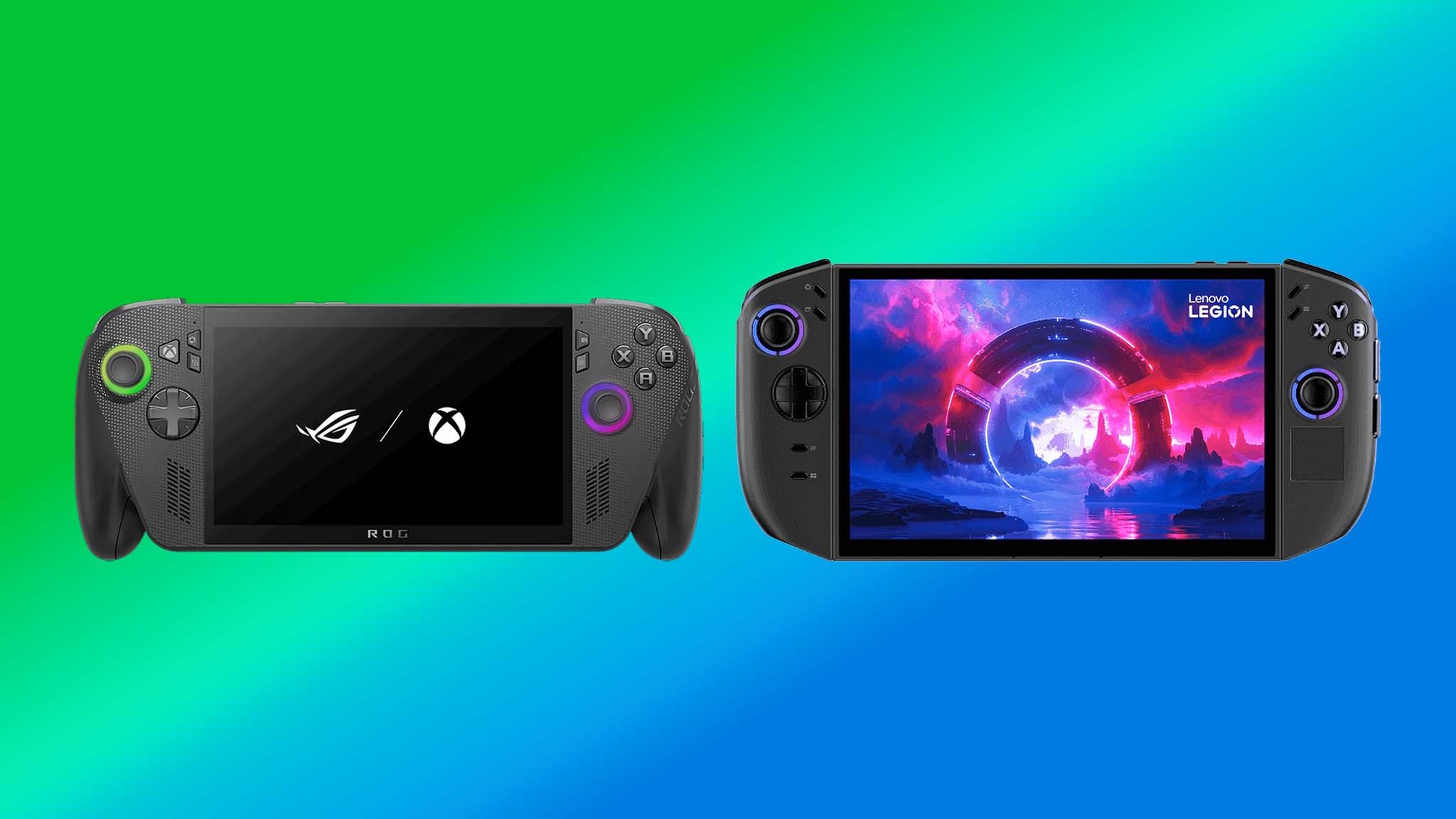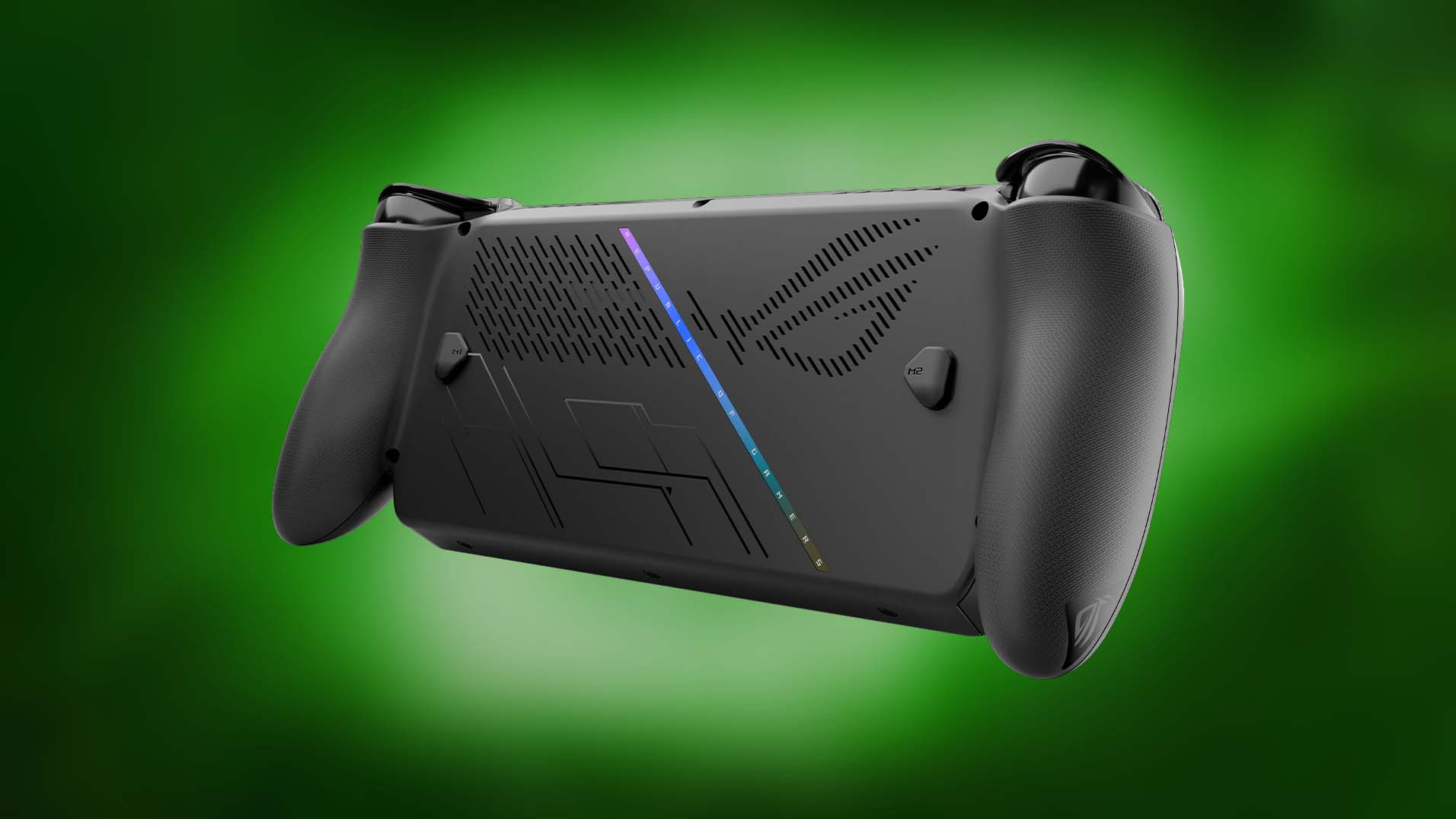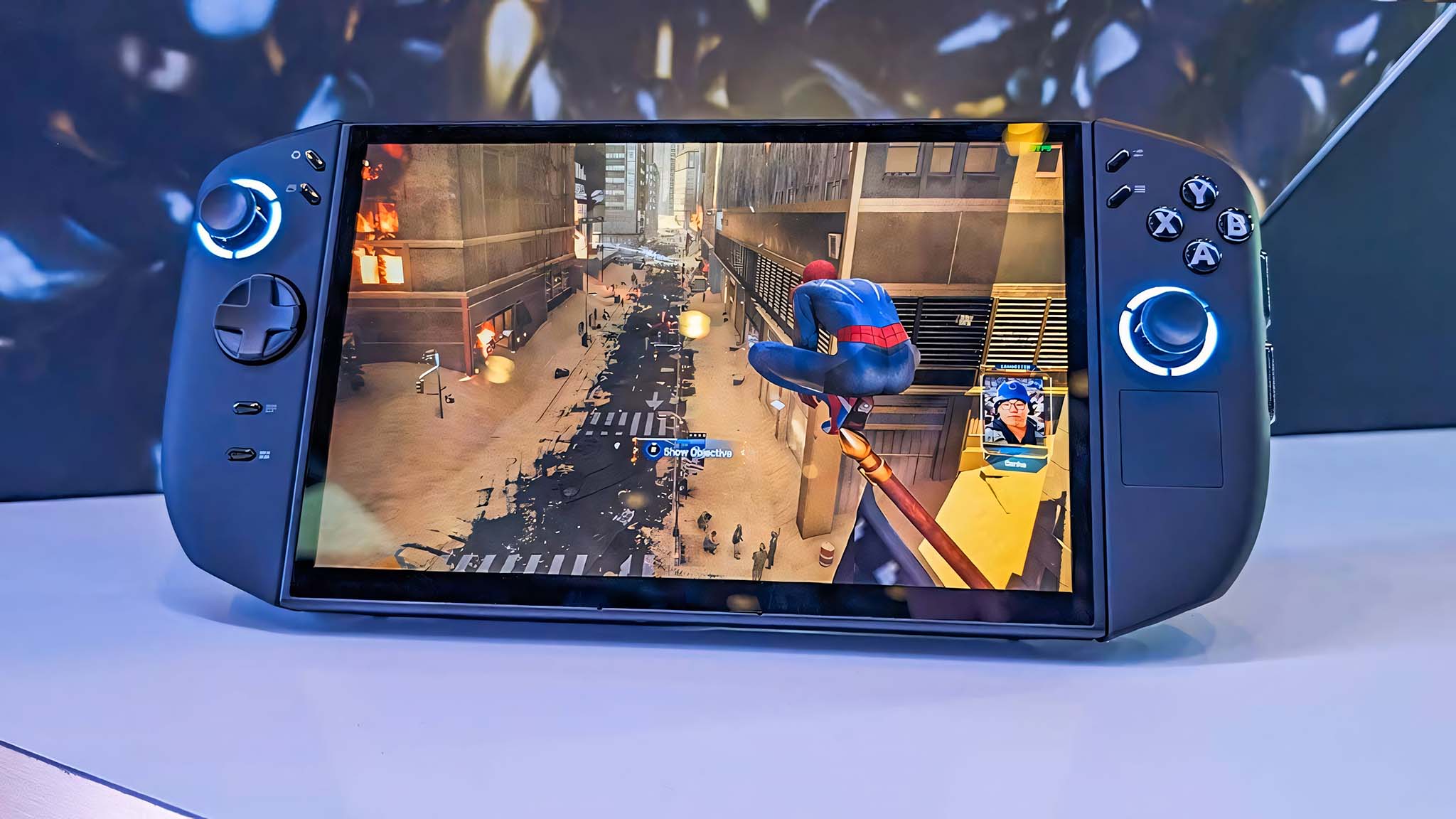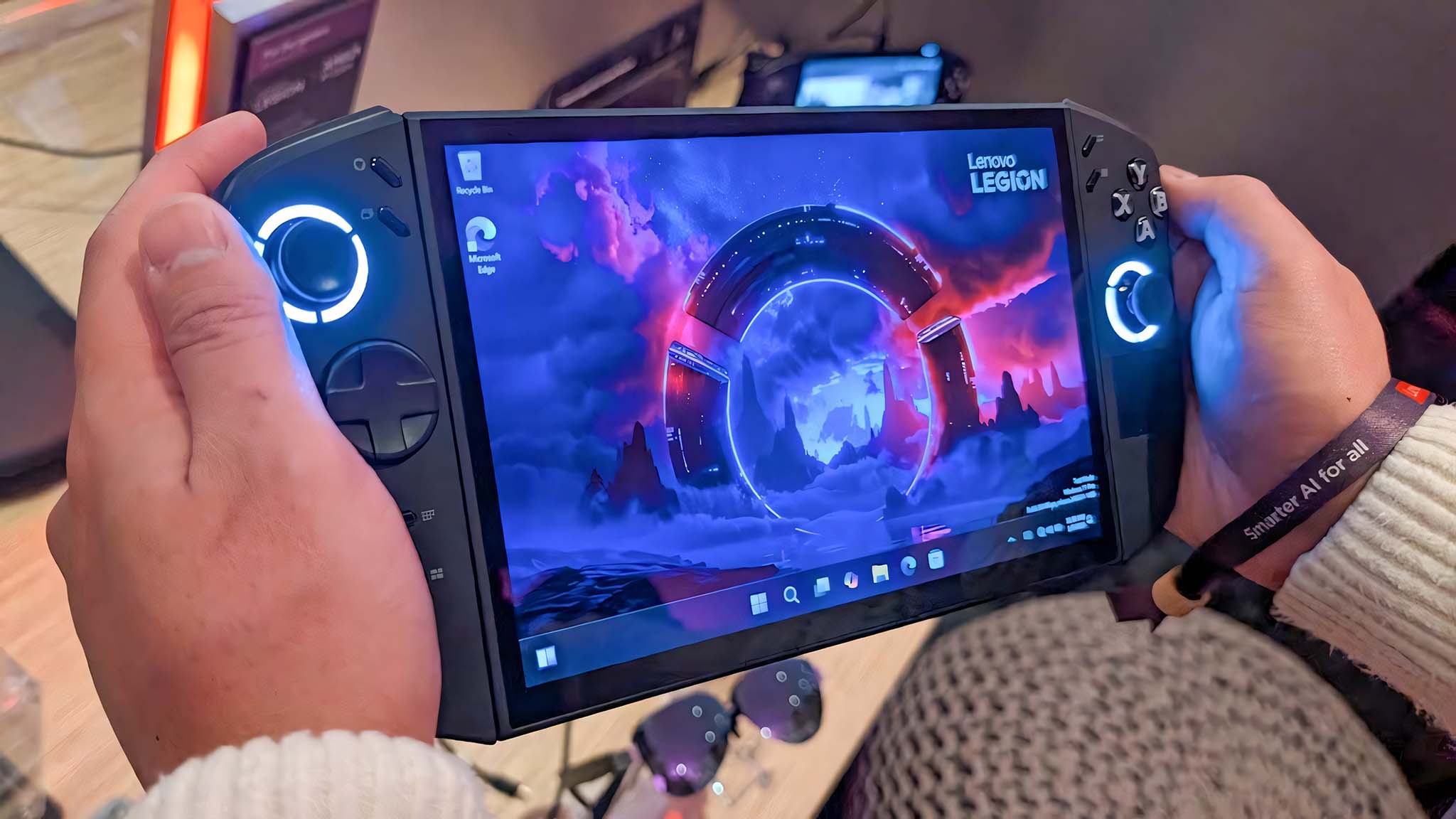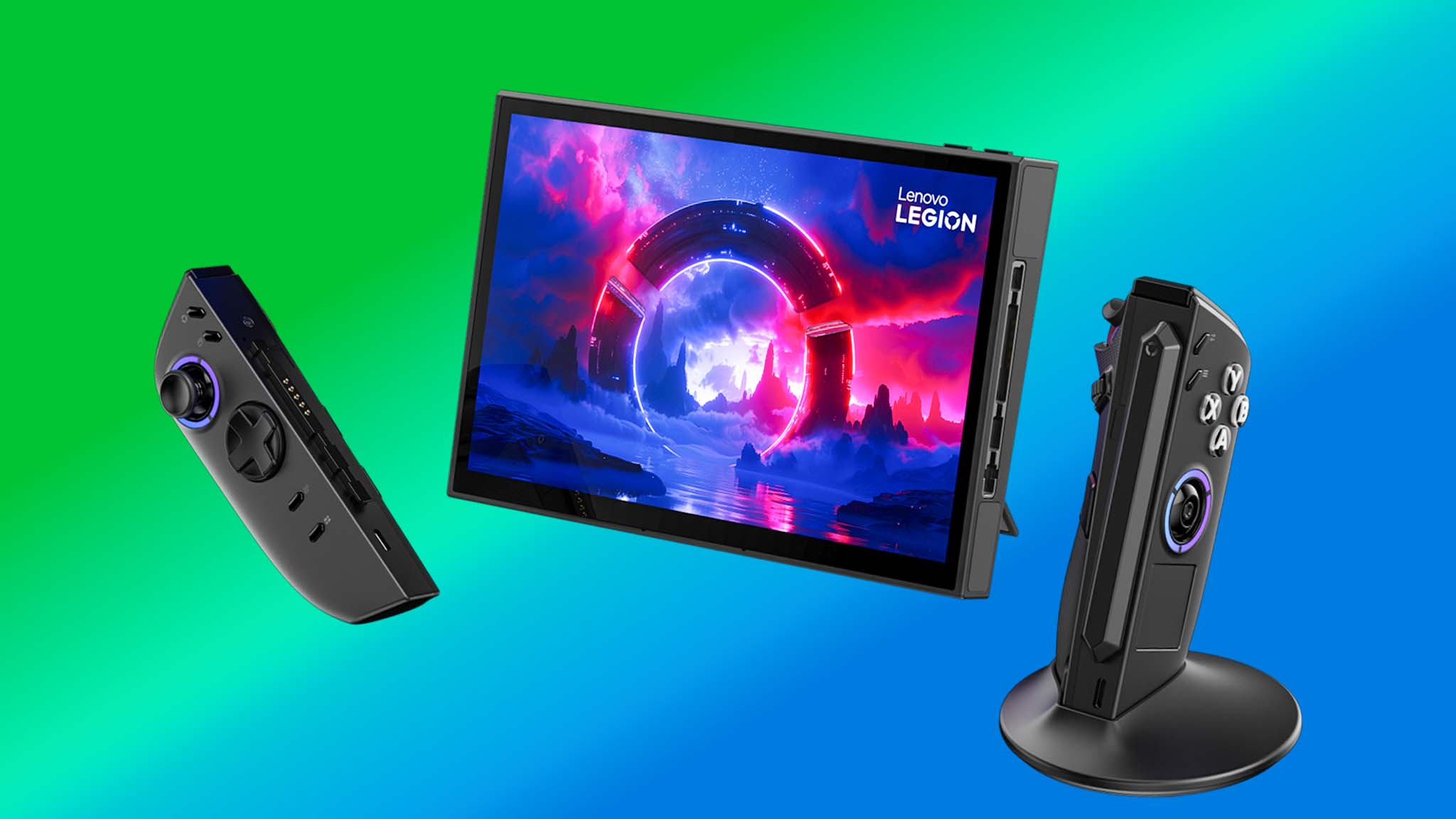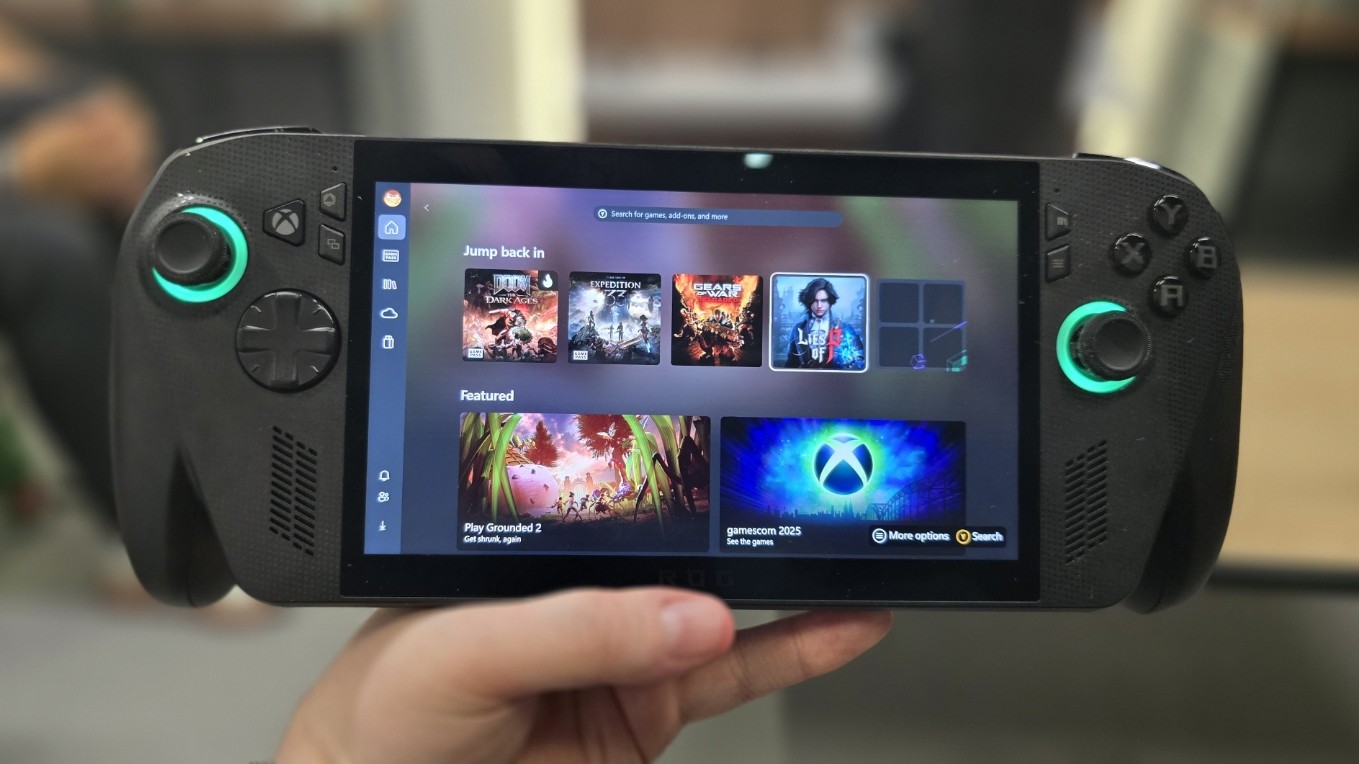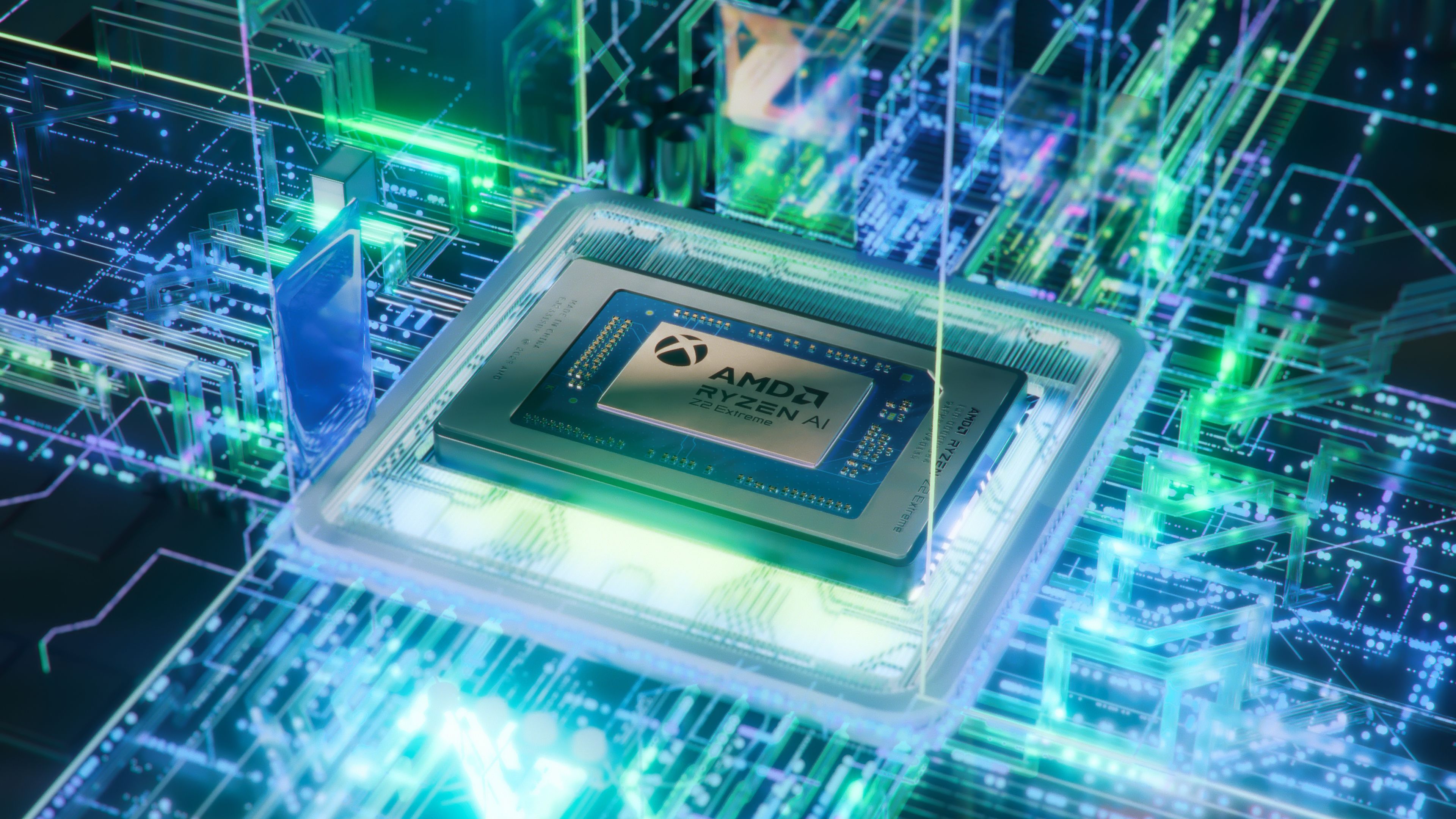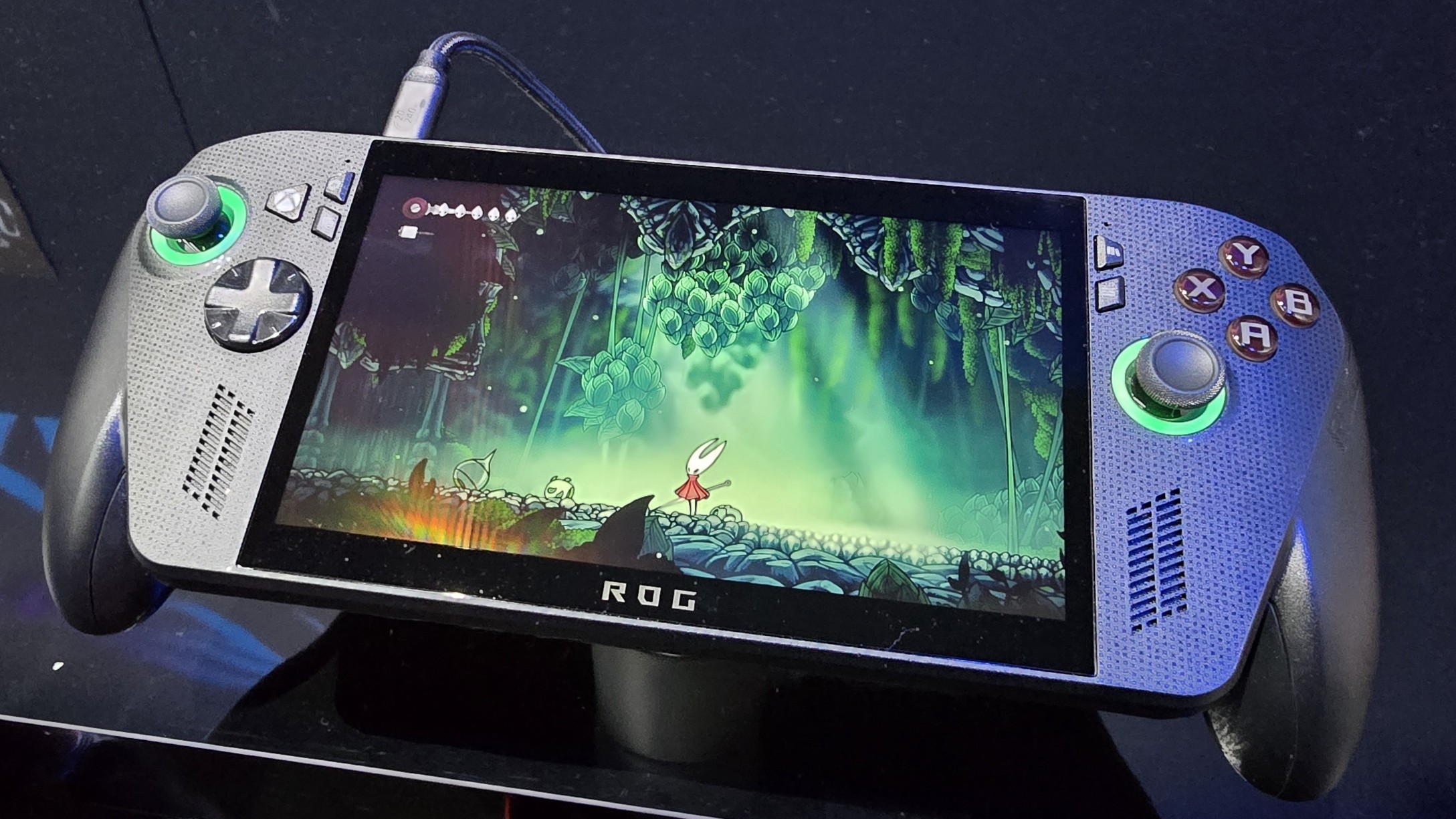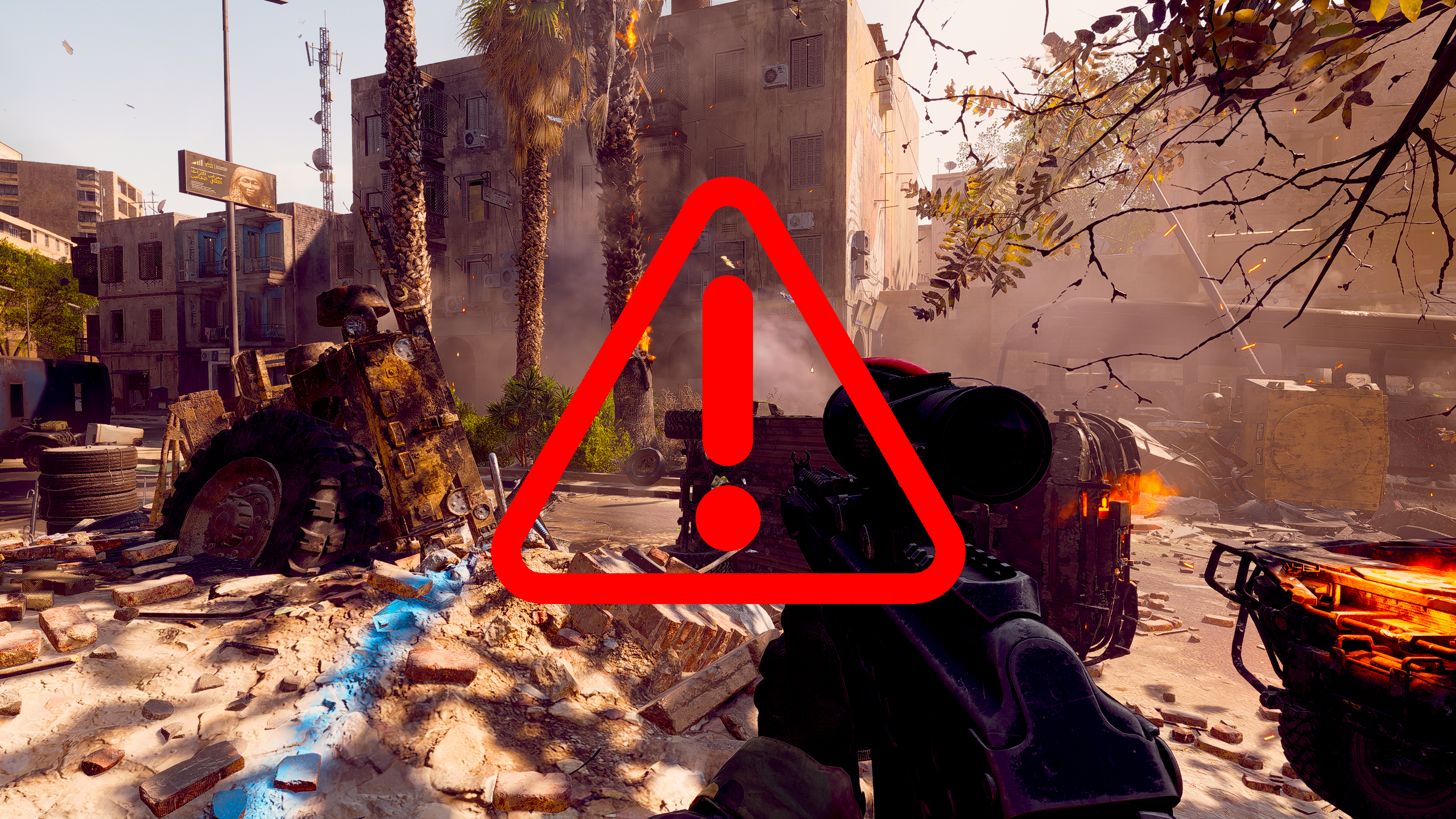ROG Xbox Ally X vs Lenovo Legion Go 2 — Which gaming handheld is better?
The ROG Xbox Ally X and the Lenovo Legion Go 2 are both next-gen Windows 11 handheld gaming PCs, but what are the differences between them?
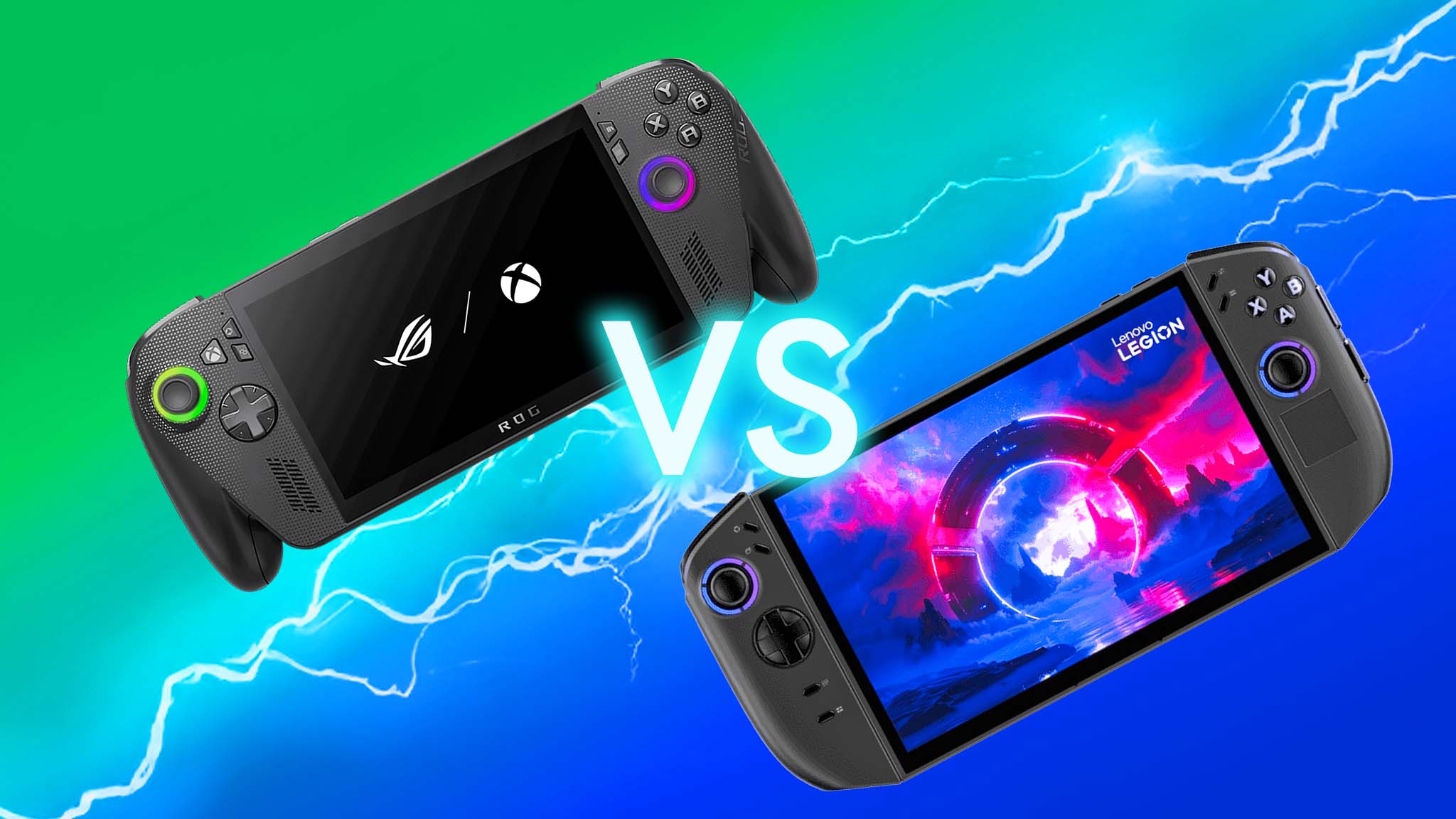
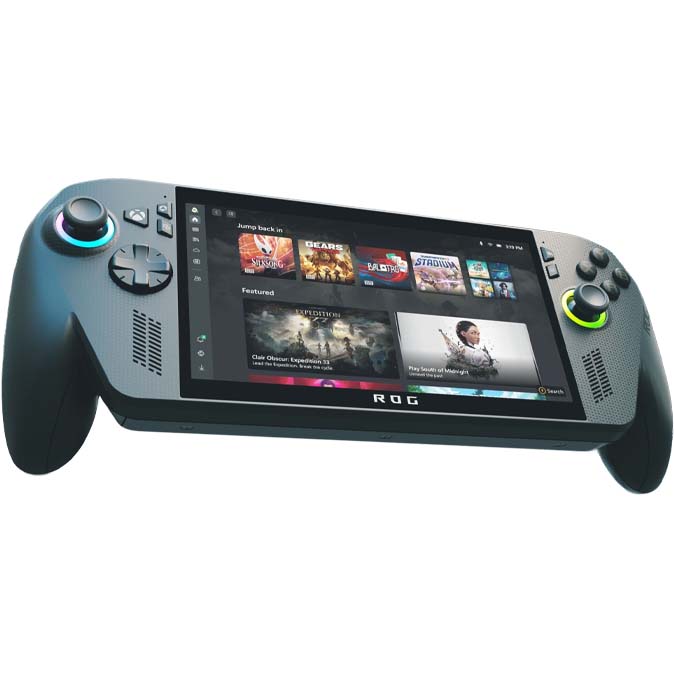
With its AMD Ryzen AI Z2 Extreme, 24GB RAM, and 1TB M.2 2280 SSD, the Xbox Ally X boasts powerful gaming handheld specs. The 7-inch IPS touchscreen supports up to 120Hz and VRR, for smooth motion clarity, even if the display type isn't as vibrant as the Legion Go 2's OLED panel.
Thick grips inspired by the Xbox Controller make this handheld comfortable to hold, while an Xbox button provides more convenient access to your game library and settings. In the end, it's the perfect choice for fans of the original ROG Ally or anyone who wants a more comfortable holding experience from their Windows 11 handhelds. It is also more affordable than the Legion Go 2.
Pros
- 7-inch FHD IPS touchscreen supports up to 120Hz and VRR
- Better grips for comfortable holding
- More settings options and Xbox UI that reduces Windows bloat
- Fingerprint reader for easy login
Cons
- No OLED option
- No kickstand
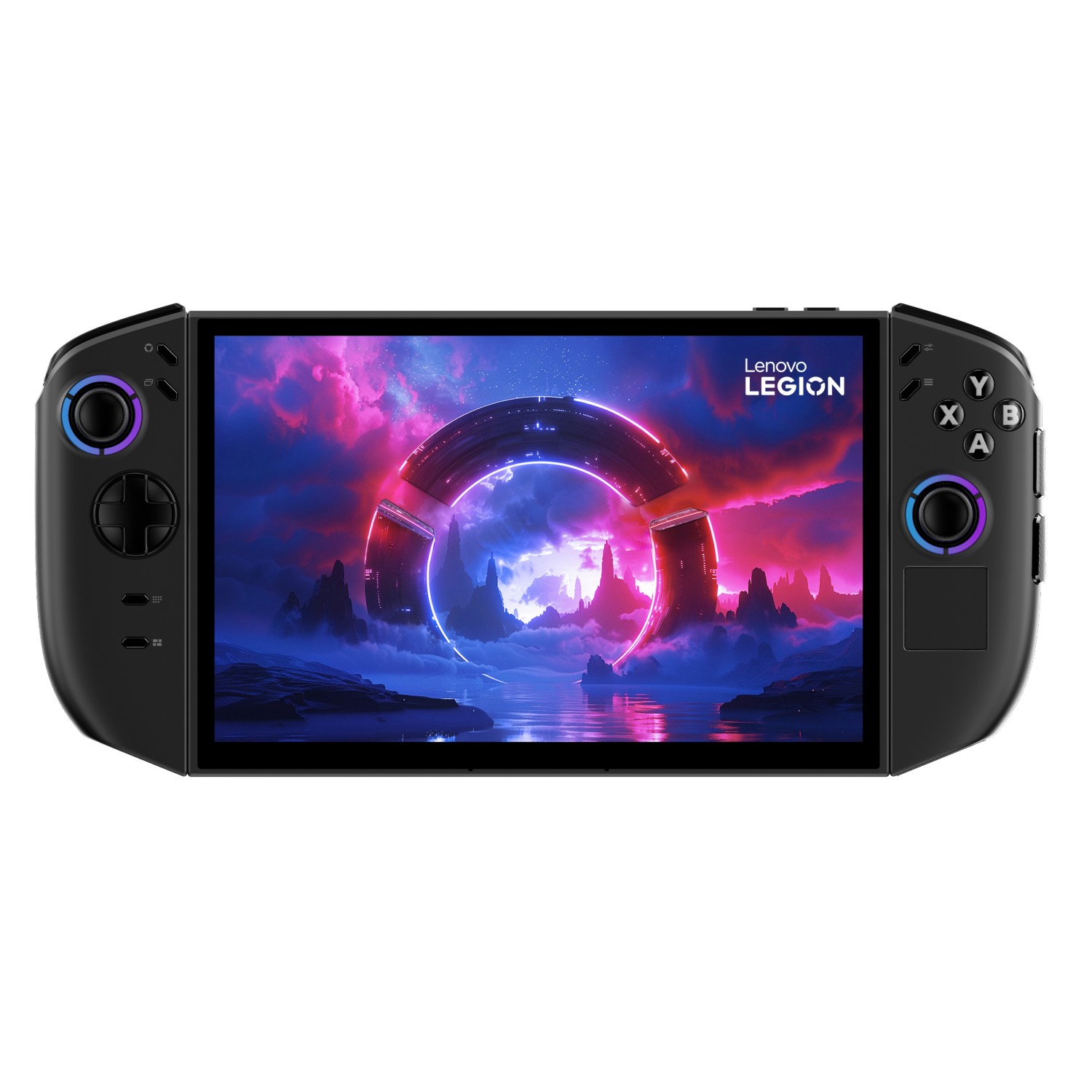
Lenovo's latest premium handheld gaming PC is powered by an AMD Ryzen Z2 Extreme APU and accompanied by up to 32GB RAM and a 2TB SSD. It has a much larger 8.8-inch OLED display that should produce better colors and contrast than the Xbox Ally IPS panel.
It's a bit heavier than the Xbox Ally, but users can remove the controllers and pop out a kickstand to reduce wrist strain. Unlike the original Legion Go, this new model supports VRR to help games play more smoothly. It also now has a fingerprint reader. All in all, it's a fantastic handheld for anyone wanting a better screen or versatile premium handheld gaming PC.
Pros
- Larger 8.8-inch WQXGA OLED touchscreen that supports 144Hz and VRR
- Detachable controllers and kickstand
- FPS mode basically turns right controller into a mouse
- Fingerprint reader makes for easy login
Cons
- Limited setting options
- Heavier and bulkier
- Costs more than Xbox Ally X
While conducting our ASUS ROG Xbox Ally X review and our Legion Go 2 review here at Windows Central, I spent dozens of hours playing games and running tests on either handheld.
With my experience at hand, I've compared these handhelds' specs and features against each other to see how they stand out in various areas.
Let's take a look at how the differences between the Xbox Ally X vs Lenovo Legion Go 2 2 can affect your gaming experience.
UPDATE Oct. 16, 2025: I've updated this entire article now that I've reviewed both the Xbox Ally X and the Legion Go 2.
Xbox Ally X vs Legion Go 2: Specs
I'll compare various aspects of these handhelds against each other, but first, take a moment to familiarize yourself with their specs and basic differences.
| Header Cell - Column 0 | Xbox Ally X | Legion Go 2 |
|---|---|---|
Starting price | $999.99 | $1,049.99 | $1,349.99 |
Release date | October 16, 2025 | October 2025 |
OS | Windows 11 Home | Windows 11 Home |
Processor | AMD Ryzen AI Z2 Extreme w/ NPU up to 50 TOPS (15-35W TDP) | Up to AMD Ryzen Z2 Extreme (15-30W TDP) |
Graphics | AMD Radeon Graphics | Up to AMD Radeon 890M Graphics |
Memory | 24GB LPDDR5X-8000 MHz RAM | Up to 32GB LPDDR5X-8000 MHz RAM |
Storage | 1TB M.2 2280 SSD | Up to 2TB M.2 2242 SSD |
Display | 7-inch FHD (1920 x 1080) 16:9 IPS touchscreen, 120Hz, 500 nits | 8.8-inch WUXGA (1920 x 1200) 16:10 OLED touchscreen, 144Hz, 500 nits, TrueBlack 1000 |
VRR | Yes | Yes |
Touchpad | No | Yes |
Fingerprint reader | Yes | Yes |
Ports | 1x USB4 Type-C, 1x USB-C 3.2 Gen 2, 1x UHS-II microSD card reader, 1x audio jack | 2x USB4 Type USB-C, 1x microSD card reader, 1x audio jack |
Connectivity | Wi-Fi 6E + Bluetooth 5.4 | Wi-Fi 6E, Bluetooth 5.3 |
Dimensions | 11.45 x 4.78 x 1.99 inches (290.8 x 121.5 x 50.7mm) | 11.64 x 5.38 x 1.66 inches (295.6 x 136.7 x 42.2mm) |
Weight | 1.57 lbs (715g) | Whole handheld: 2.03 lbs (920g) | Controllers only: 0.46 lbs (210g) |
Battery | 80Whr (65W AC adapter) | 74Whr w/ Super Rapid Charge (65W AC adapter) |
Note: I am not comparing the starting Xbox Ally (white) handheld against the Legion Go 2 since it is more of a competitor against the Legion Go S rather than the Legion Go 2.
In case you didn't already know, the ROG Xbox Ally X is the successor to the popular ROG Ally X handheld, but the Xbox name is on there because Microsoft has partnered with ASUS ROG for this new Windows 11 device.
Now that you've had a moment to look at these specs, let's discuss them more in depth.
Xbox Ally X vs Legion Go 2: Price
PRICE WINNER: There are two ways to see this. The Xbox Ally X costs less, but the Legion Go 2 does offer additional features and versatility, so you could argue it's a better value given its price.
Perhaps the first thing you noticed looking at the previous spec chart is how expensive these devices are, with the Legion Go 2 being the pricier option.
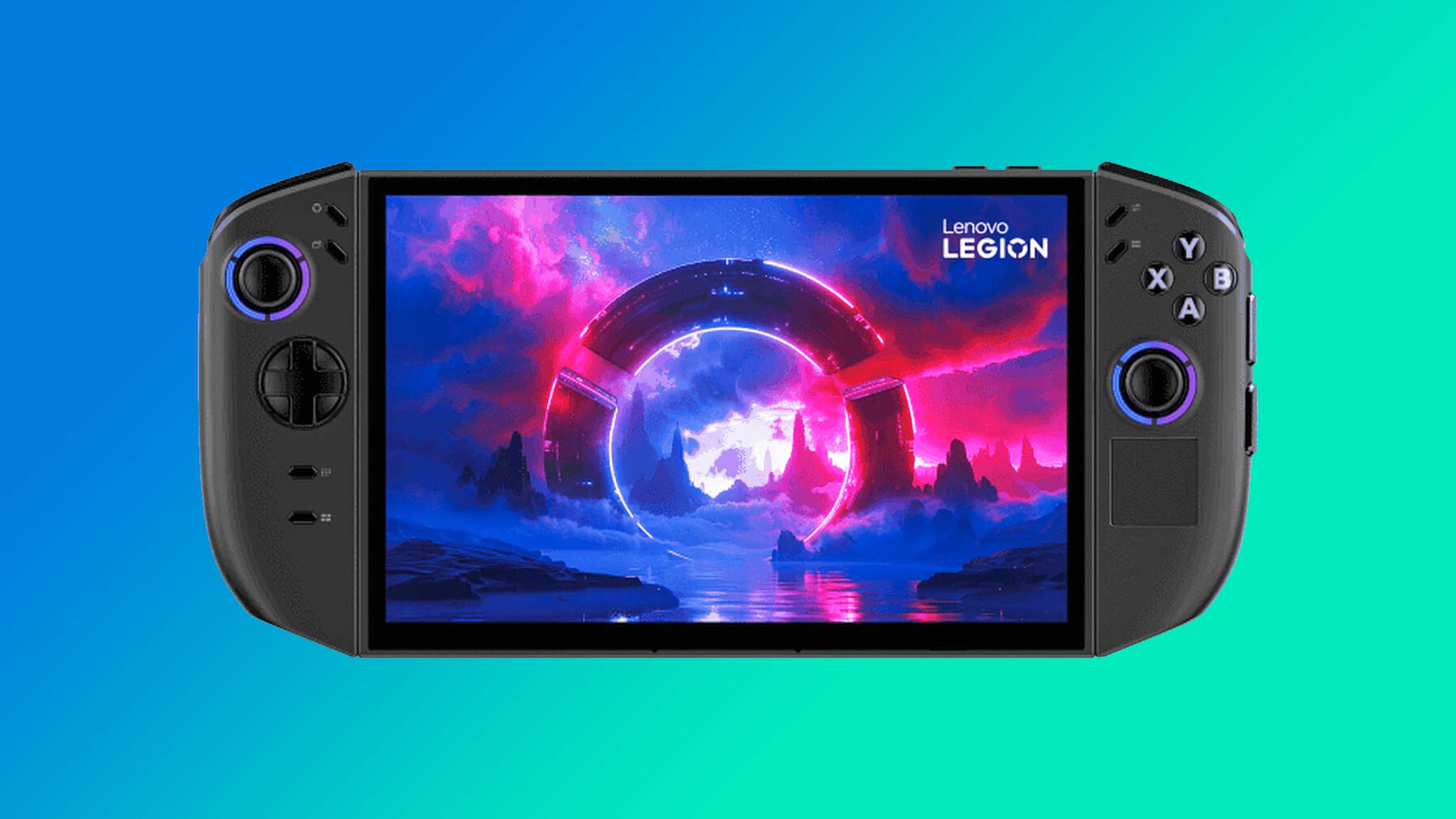
- Legion Go 2 vs Legion Go
- Legion Go 2 vs Legion Go S
- Best ROG Ally X battery packs
- Best ROG Ally X microSD cards
- Best ROG Ally X optimized games
The Xbox Ally X sells for $999.99 while the Legion Go 2 has as starting $1,049.99 configuration and then a $1,349.99 configuration.
Remember, these are premium handheld gaming PCs. If you're after something more affordable, Lenovo offers the Legion Go S line with either a Windows or SteamOS option. And then, there is also a starting Xbox Ally (without the X at the end).
Now, the Legion Go 2's higher price point, while outside of many people's ranges, is warranted given that it has that larger OLED display, a higher refresh rate, detachable controllers, and a kickstand, which the Xbox Ally X doesn't have.
Both devices are slated to launch in October 2025. The Xbox Ally X is already available as of the time of writing, but it's unclear when the Legion Go 2 will hit store shelves.
Xbox Ally X vs Legion Go 2: Performance and storage
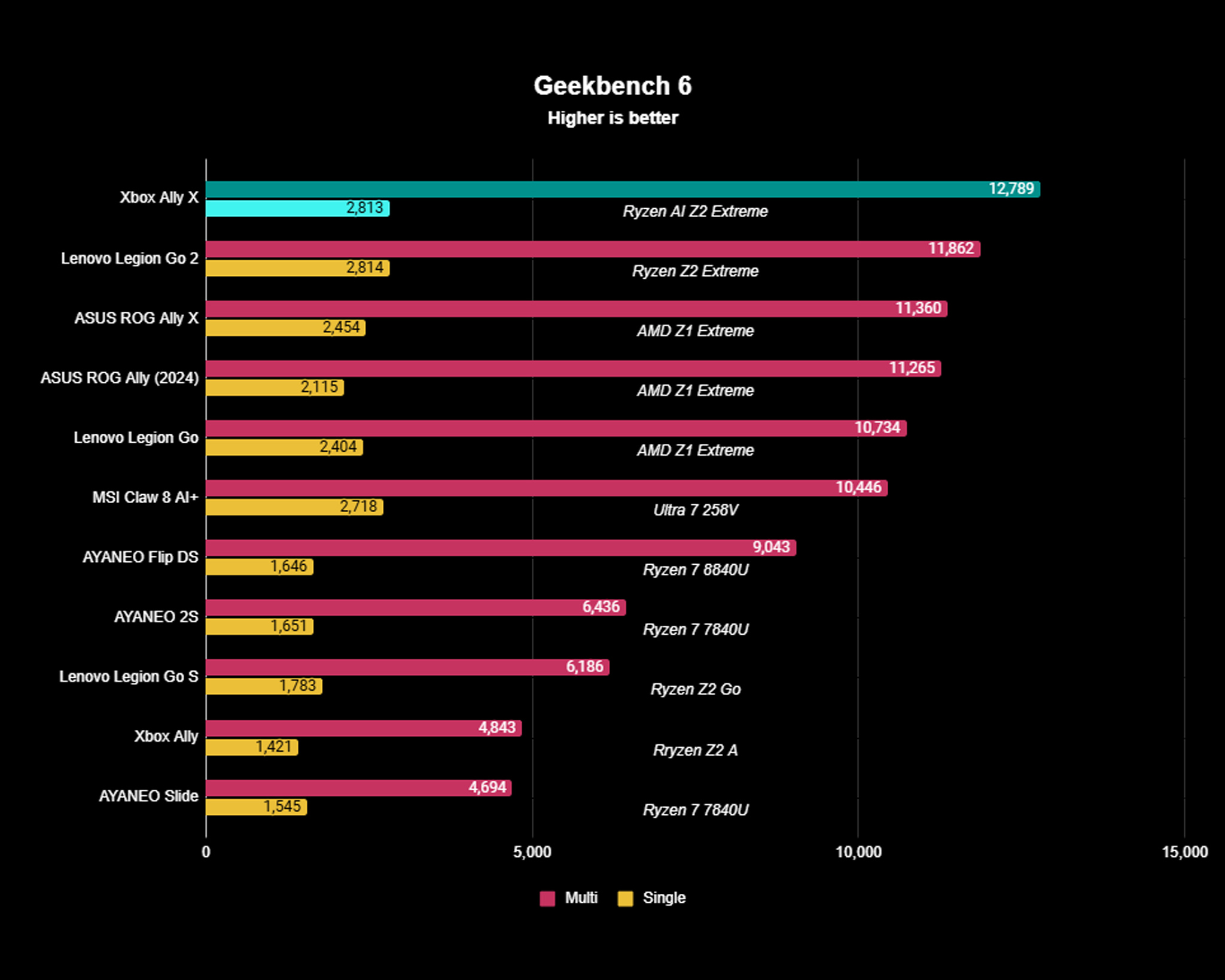
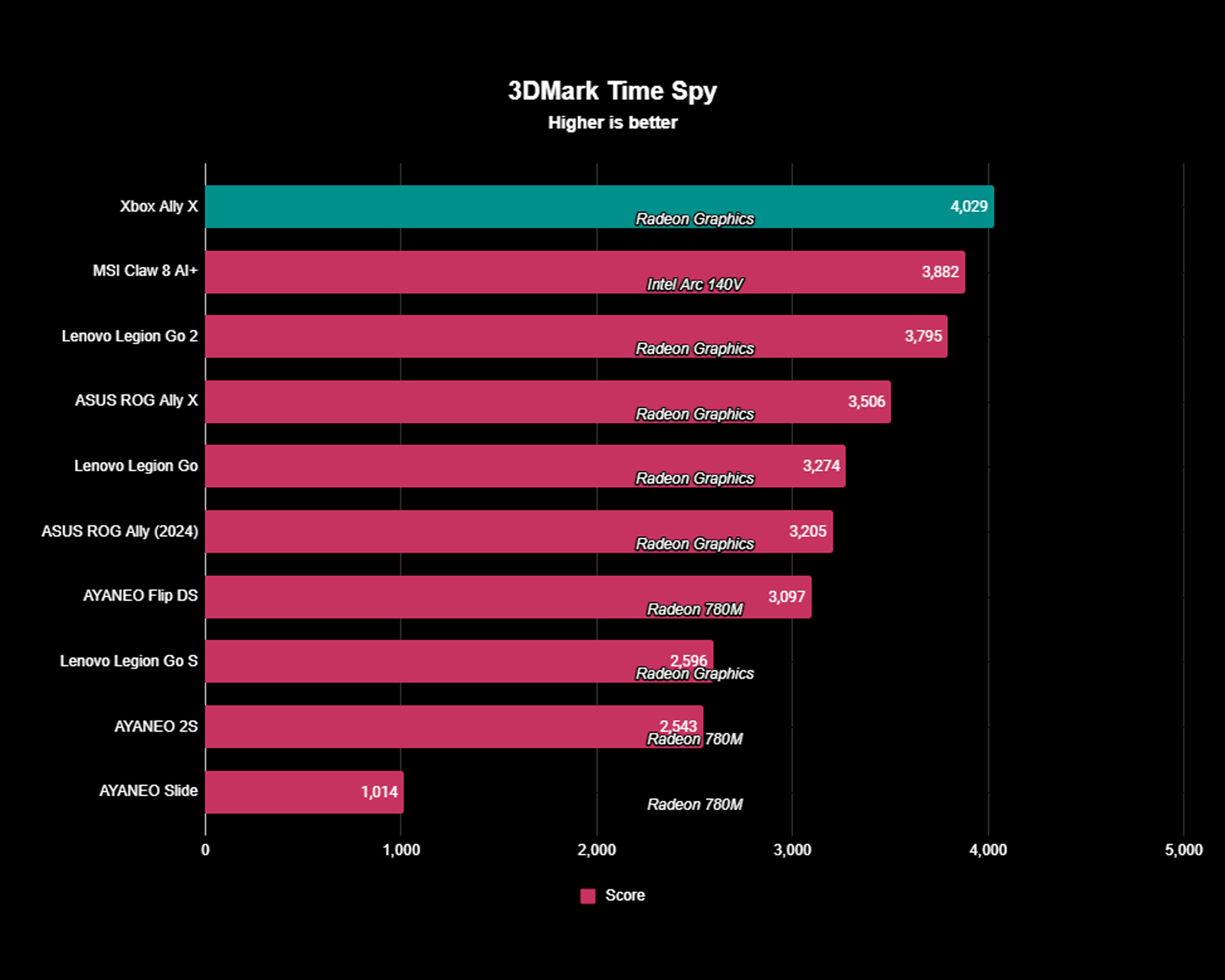
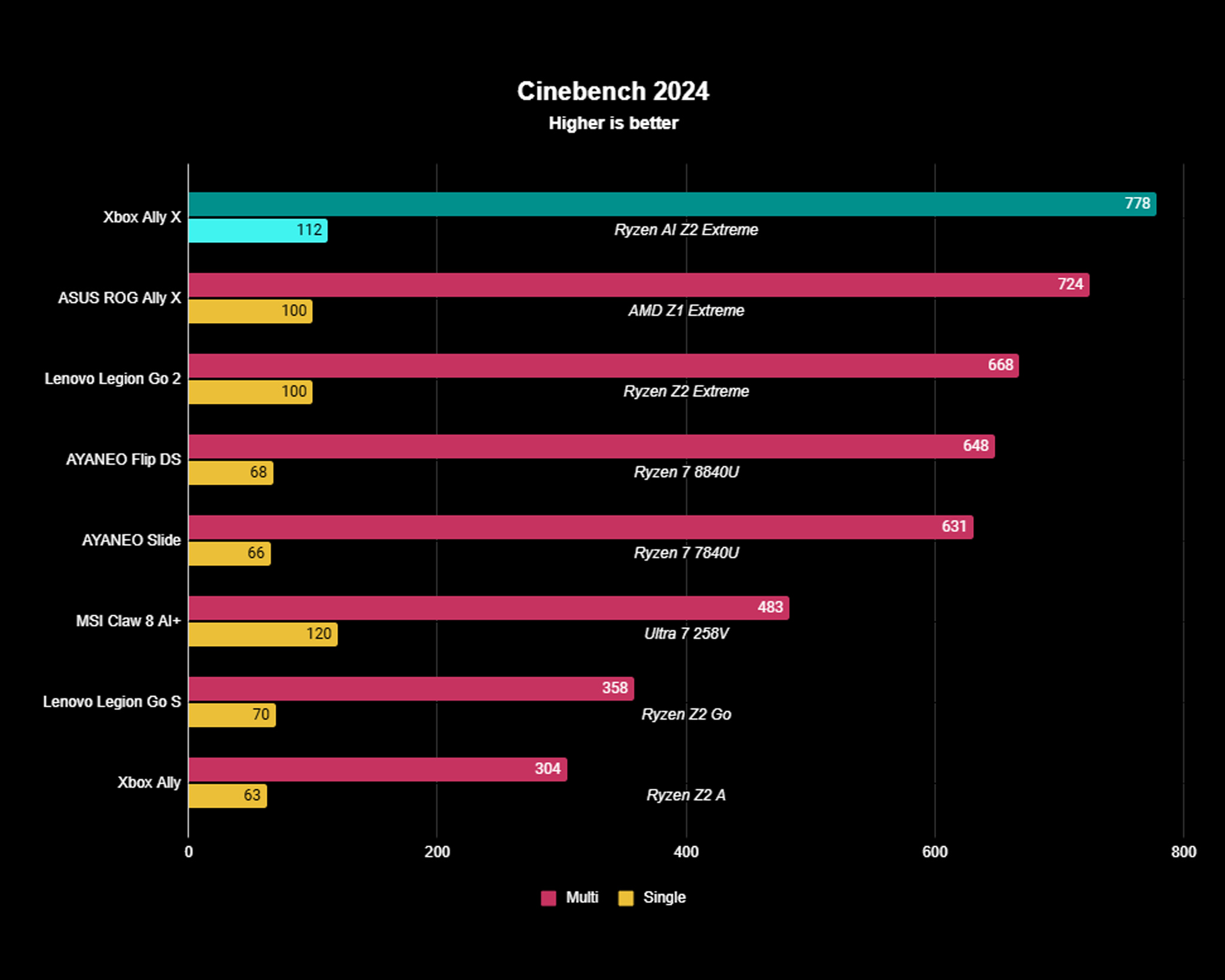
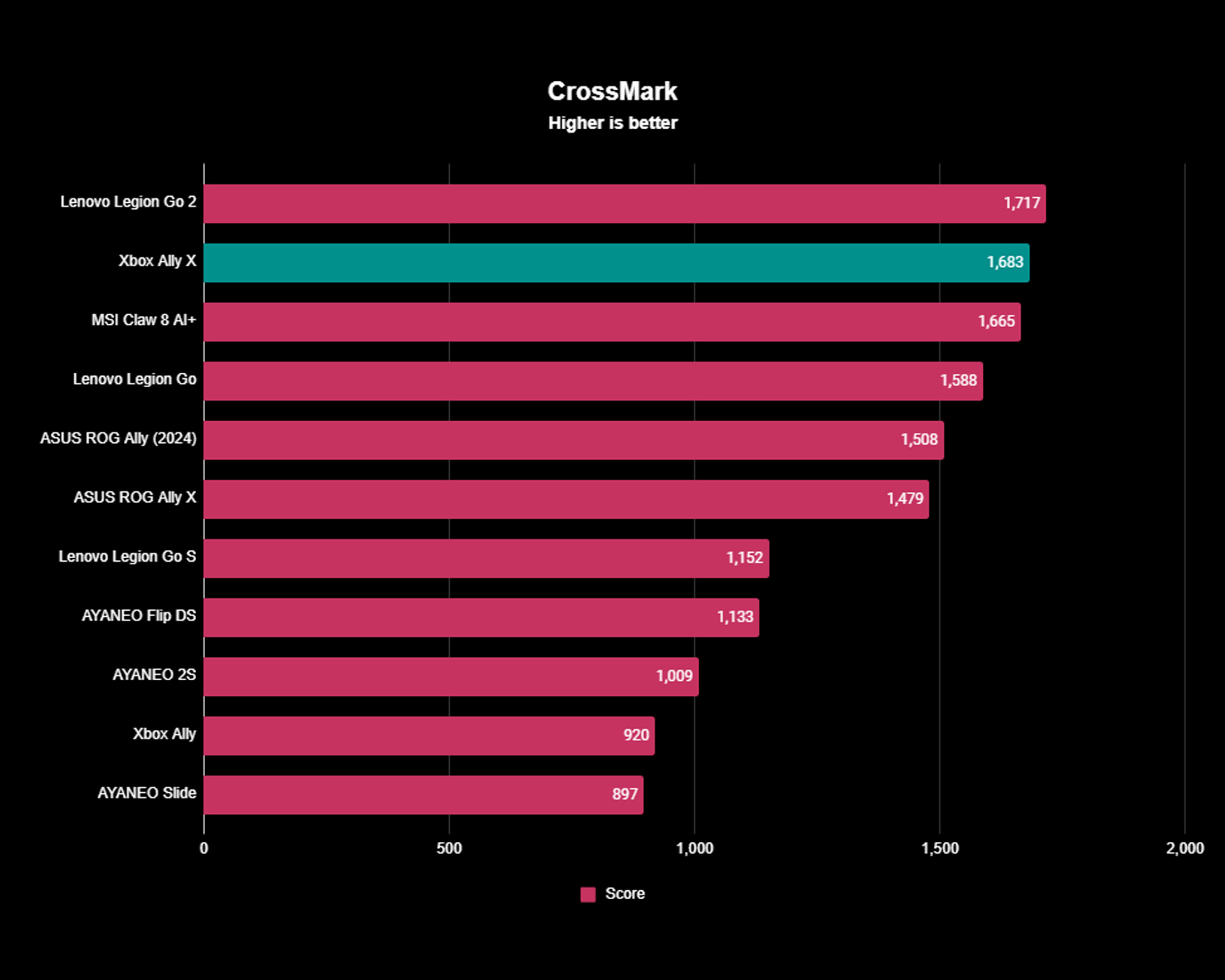
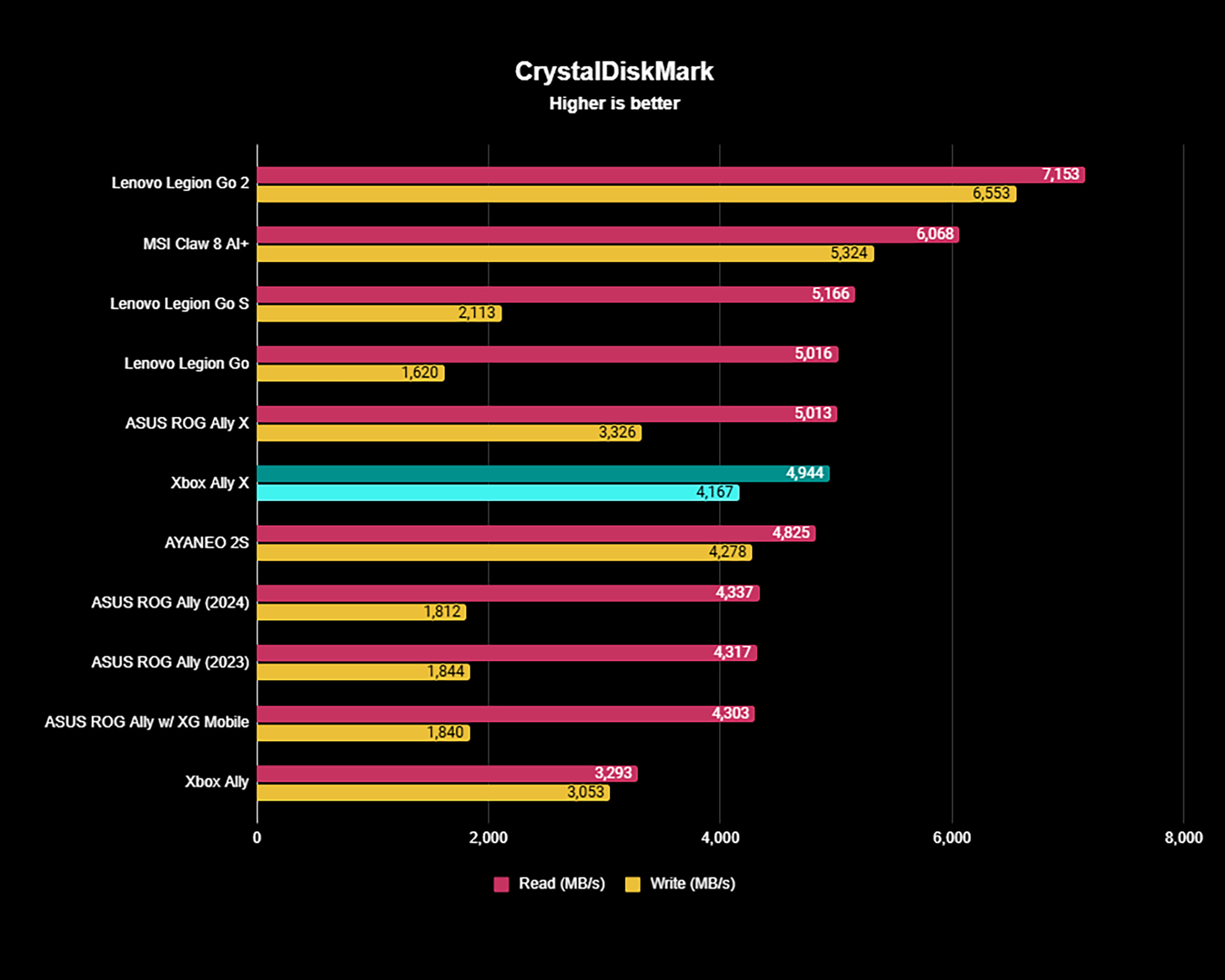
PERFORMANCE & STORAGE WINNER: The Xbox Ally X and Legion Go 2 both offer excellent CPU and GPU performance, but the Legion Go 2 has notably faster SSD read and write speeds.
When it comes to performance, one of the biggest differences between the Xbox Ally X and the Legion Go 2 is their AMD Ryzen Z2 series processors.
The Legion Go 2 sports an AMD Ryzen Z2 Extreme, while the Xbox Ally X has an AMD Ryzen AI Z2 Extreme, an AI processor.
Both of these APUs (Accelerated Processing Units) feature 8 cores and 16 threads with Zen 5 architecture, as well as 16GPU cores with RDNA3.5 architecture. However, the Xbox Ally X's AI processor features an NPU (neural processing unit) that can reach up to 50 TOPS.
In case you don't know, this AI processor helps the Xbox Ally X work more efficiently when running certain AI processes, since the NPU takes some of the load off of the CPU (central processing unit) and GPU (graphics processing unit).
Processor | CPU Cores & Threads | GPU Cores | TDP |
AMD Ryzen AI Z2 Extreme (Xbox Ally X) | 8 cores, 16 threads w/ XDNA2 NPU (Zen 5) | 16 CU (RDNA3.5) | 15-35W |
AMD Ryzen Z2 Extreme (Legion Go 2) | 8 cores, 16 threads w/ XDNA2 NPU (Zen 5) | 16 CU (RDNA3.5) | 15-35W |
In my testing, the Xbox Ally X just barely beat out the Legion Go 2 in most of my CPU and GPU tests, but both offered impressive performance overall. That said, I'll say that the Legion Go 2 offers better performance overall since it has a much better SSD inside of it that reaches faster read and write speeds for game loading and saving.
Of course, the best gaming handhelds are in no way as powerful as the best gaming laptops or best gaming desktops since handhelds trade off portability for power.
As you likely already know, overall system performance is also determined by how well various parts of a computer system work together. Part of that includes having reliable memory and storage.
The Xbox Ally X has 24GB LPDDR5X-8000 MHz RAM, while the Legion Go 2 can have up to 32GB LPDDR5X-8000 MHz RAM. Both are more than adequate for handheld gaming. The more the better for intensive graphics games, especially. But the higher the capacity, the higher the cost of the device.
When it comes to SSD storage, both the Xbox Ally X's 1TB M.2 2280 SSD and the Legion Go 2's offering of up to 2TB M.2 2242 SSD provide ample SSD storage.
But you'll note that these devices use different-sized SSDs. Most other mainstream Windows handhelds on the market use the 2280 SSD, like the Xbox Ally X.
After opening the Legion Go 2 and looking inside, I learned that the Legion Go 2 wasn't designed with upgradability in mind. Meanwhile, the Xbox Ally X SSD is much easier to upgrade, and WD_BLACK has designed SSDs exclusively for Xbox Ally X.
Additionally, both devices have the ability to expand game storage space using the best microSD cards.
Xbox Ally X vs Legion Go 2: Display
DISPLAY WINNER: The Legion Go 2 OLED screen is better than the Xbox Ally X's IPS display in just about every way. The only downside to the Legion Go 2 having these better display features is that it makes the Lenovo's handheld more costly.
You'll have noticed by looking at the specs that the Legion Go 2 has a better display than the Xbox Ally X, in just about every way.
Its 8.8-inch touchscreen might not sound that different on paper from Xbox Ally X's 7-inch touchscreen, but believe me, the size difference is massive when viewed in person. You'll be able to make out more details without having to squint as much.
On top of that, the Legion Go 2 has an OLED display, which means the colors it produces are far more vibrant, and the contrast also looks better thanks to the display's ability to produce true black.
RELATED: IPS LCD vs OLED vs tandem OLED vs QD-OLED vs QLED vs AMOLED vs Mini LED: Which is the best display?
Unlike the original Legion Go, this new Lenovo handheld supports VRR (variable refresh rate), which helps games play more smoothly on your screen. The Xbox Ally X also supports VRR, but that was expected since the ROG Ally X did.
The Legion Go 2's 144Hz refresh rate is higher than the Xbox Ally X's 120Hz, while the WUXGA (1920x1200) resolution of the Legion Go 2 is also crisper than the Xbox Ally X's FHD (1920x1080) resolution.
Xbox Ally X vs Legion Go 2: Buttons, joysticks, and grip
CONTROLS & GRIPS WINNER: There are a few tradeoffs here. The Xbox Ally X has much better grips and is more comfortable to hold. However, the Legion Go 2 offers Hall effect joysticks that won't drift and it's more versatile. Unlike the Xbox Ally X, it can be put in tabletop mode if you don't want to hold the relatively heavy handheld.
Many of the controls are placed in similar locations between the two devices; however, there are some major trade-offs when it comes to comparing these handhelds' grips and controls against each other.
For one thing, the Xbox Ally X's grips were designed after the Xbox controller, which many people think is the most comfortable gamepad design out there. As such, the Xbox Ally X has better grips overall. As an example, my hands often get uncomfortable holding handhelds, but I don't have this problem with Xbox Ally X.
Both devices have offset joysticks, but only the Legion Go 2 has Hall Effect joysticks, which will prevent drift from ruining your playing sessions.
Additionally, the Legion Go 2 has a kickstand, and its TrueStrike controllers can detach from the main device, which gives players the freedom to play in tabletop mode. This is something that isn't possible on Xbox Ally X.
That said, if you're willing to pay, you can give your Xbox Ally X a kickstand using the dBrand ROG Xbox Ally X Killswitch at Best Buy.
So, even though the Legion Go 2 weighs more, being able to play in tabletop mode with detached controllers can lessen the strain it puts on your hands and wrists right out of the box. The kickstand also makes it easier to use your handheld as an all-around entertainment device, to prop up while you watch Netflix or catch up on YouTube channels.
What's more, the Legion Go 2's right controller can be put in FPS mode and slid around a surface to be used like a mouse, which is useful when playing games that rely more on aiming or clicking.
Additionally, unlike the Xbox Ally X, the Legion Go 2 has a small touchpad on the right side to give more fine control in specific menus and FPS games.
Overall, the Legion Go 2 has better controls and has more features than the Xbox Ally X, but not everyone needs all of these features. So if you want a more versatile playing experience, you should go with Legion Go 2, and if not, the less-expensive Xbox Ally X.
Xbox Ally X vs Legion Go 2: Compatible games & Operating system
SOFTWARE WINNER: Both Windows handhelds can run the same kinds of programs and games. However, The Xbox Ally X offers far more customization options in its software.
Both the Legion Go 2 and the Xbox Ally X run Windows 11, which means you can run any program or gaming service on these devices that you would on a Windows gaming laptop.
Now, Microsoft has been busy creating an Xbox full screen experience, a mode that reduces Windows 11 bloat and allows handhelds to work more efficiently when running games. It's currently only on Xbox Ally and Xbox Ally X, but could come to other handhelds in the future.
One thing I've loved about previous ROG Ally handhelds is that they give me far more control over the settings than the Legion Go line does. For instance, I can adjust VRAM easily within an app on ROG Ally X, whereas I need to go into the BIOS to change Legion Go 2 VRAM.
Meanwhile, some other settings changes aren't available at all on Legion Go handhelds, which can be frustrating.
Xbox Ally X vs Legion Go 2: Battery life
BATTERY LIFE WINNER: Overall, the Legion Go 2 offers better battery life when gaming, despite having the smaller battery capacity.
I put the Legion Go 2's 74Whr battery and the Xbox Ally X's larger 80Whr battery through the same battery tests and got some interesting results.
| Row 0 - Cell 0 | Xbox Ally X (80Whr) | Legion Go 2 (74Whr) |
Cyberpunk 2077 (Max TDP) | 1 Hr 53 Mins | 2 Hrs 17 Mins |
Celeste (Lowest TDP) | 5 Hrs 6 Mins | 5 Hrs 18 Mins |
Office tasks (Mid TDP) | 14 Hrs 24 Mins | 11 Hrs 30 Mins |
The Legion Go 2's smaller battery managed to last 20 minutes longer while playing Cyberpunk 2077 on Max TDP, with the screen around 200 nits brightness, and with the game on Steam Deck graphics preset.
When running Celeste, a pixel-art 2D platformer, on the lowest default TDP settings, the Legion Go 2 lasted 12 minutes longer.
However, when I put either device at the middle TDP preset with the screens around 200 nits, the Xbox Ally X surprisingly lasted two hours and 54 minutes longer. This is likely due to the fact that there is a specific Windows TDP setting on Xbox Ally X, which could have been further optimized for office tasks.
Of course, you're probably only going to be using your handheld gaming PC for, you know, gaming. So, yeah, the Legion Go 2 has better gaming battery life overall, even if it's only by a little.
To be honest, the battery life of both of these devices isn't where I'd like it to be, but this is just where battery technology is at this point.
Xbox Ally X vs Legion Go 2: Which should I buy?
Both the Xbox Ally X and Legion Go 2 are excellent next-gen handheld gaming PCs. The thing is, they offer different conveniences, which will serve different needs.
The Xbox Ally X is definitely expensive, but it is the most affordable premium handheld of the two. It's also a great choice for anyone who wants meaty grips to assuage hand cramps and offers far more customization options in settings.
Meanwhile, the Legion Go 2 is an all-around better handheld between the two, if you're willing to spend the high amount to grab one. That gorgeous OLED on a larger screen will look stunning and offer buttery smooth motion clarity.
Plus, having the ability to pop out the Legion Go 2's kickstand and pull off the controllers gives you more ways to use this handheld out of the box than you can with the Xbox Ally X.
So, in the end, if you want a more affordable and traditional handheld that offers good performance and plenty of customization settings, then the Xbox Ally X could be the best fit. But if you want a versatile handheld with an amazing display, go for the Legion Go 2.

The Xbox Ally X is the successor to the popular ROG Ally X. It offers a 7-inch IPS touchscreen that supports up to 120Hz and VRR. Meanwhile, it's powered by the next-gen AMD Ryzen AI Z2 Extreme processor with up to 24GB RAM and 1TB SSD. The thick grips are designed to feel more like an Xbox controller, and it utilizes an Xbox interface to conveniently access your library and settings.
All the latest news, reviews, and guides for Windows and Xbox diehards.

Self-professed gaming geek Rebecca Spear is one of Windows Central's editors and reviewers with a focus on gaming handhelds, mini PCs, PC gaming, and laptops. When she isn't checking out the latest games on Xbox Game Pass, PC, ROG Ally, or Steam Deck; she can be found digital drawing with a Wacom tablet. She's written thousands of articles with everything from editorials, reviews, previews, features, previews, and hardware reviews over the last few years. If you need information about anything gaming-related, her articles can help you out. She also loves testing game accessories and any new tech on the market. You can follow her @rrspear on X (formerly Twitter).
